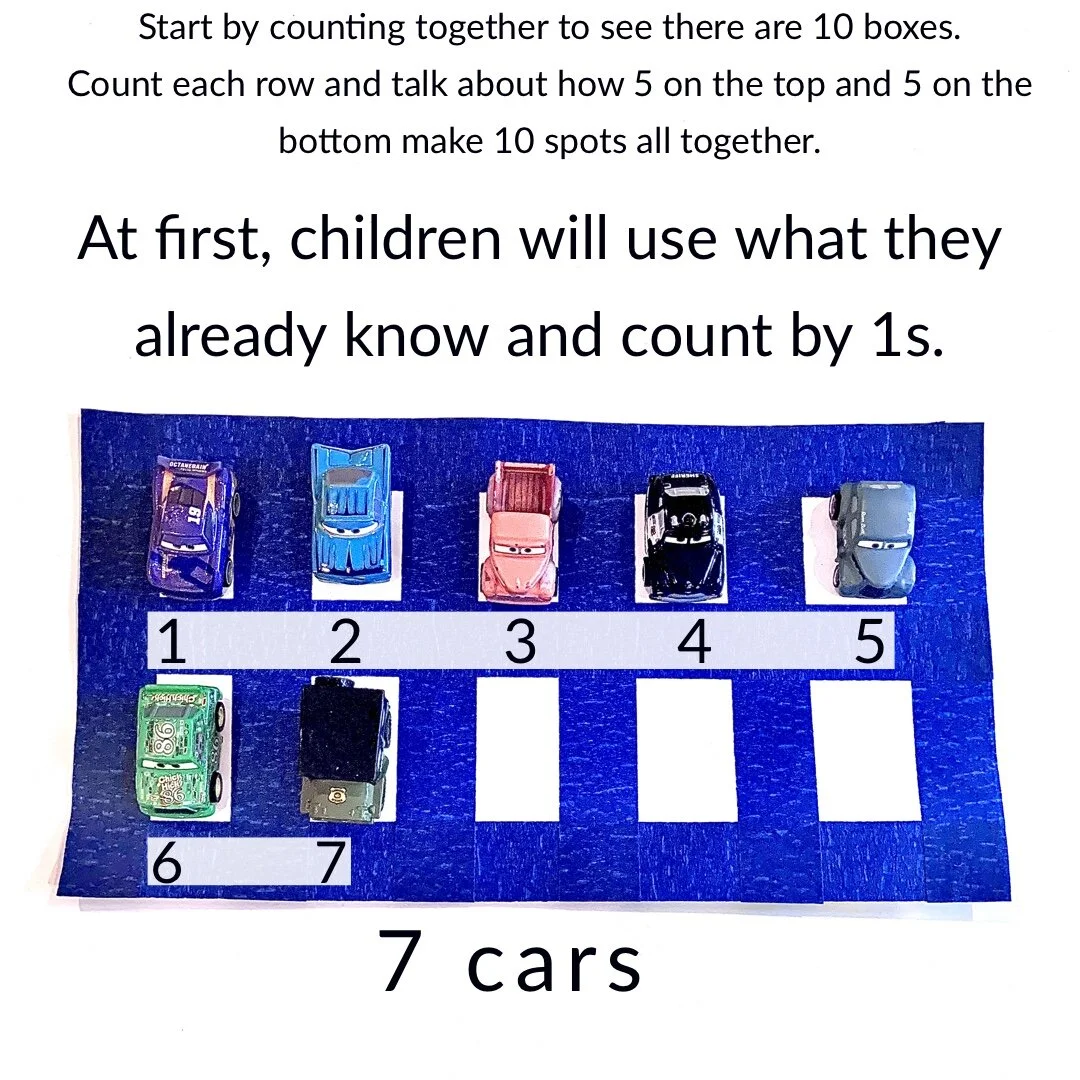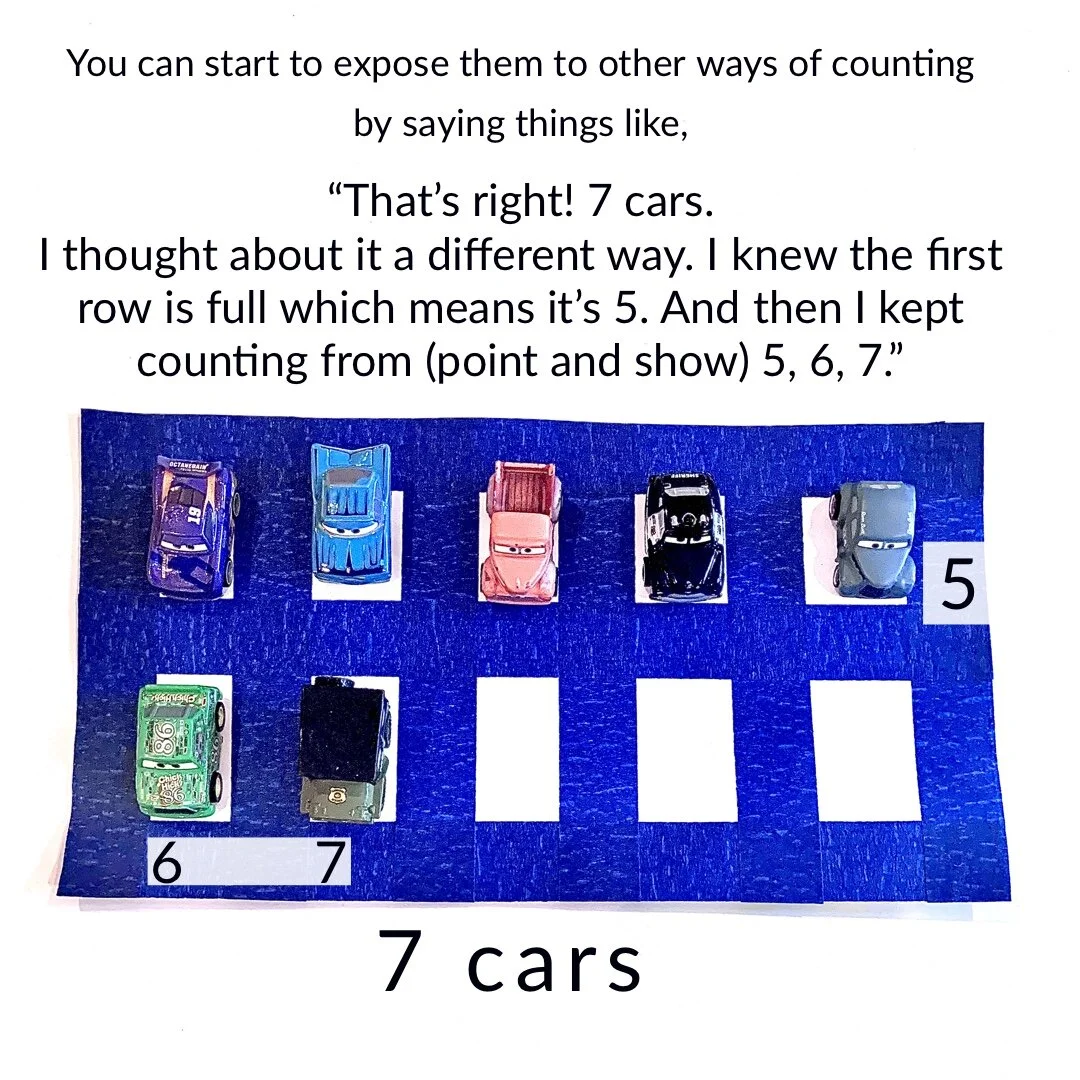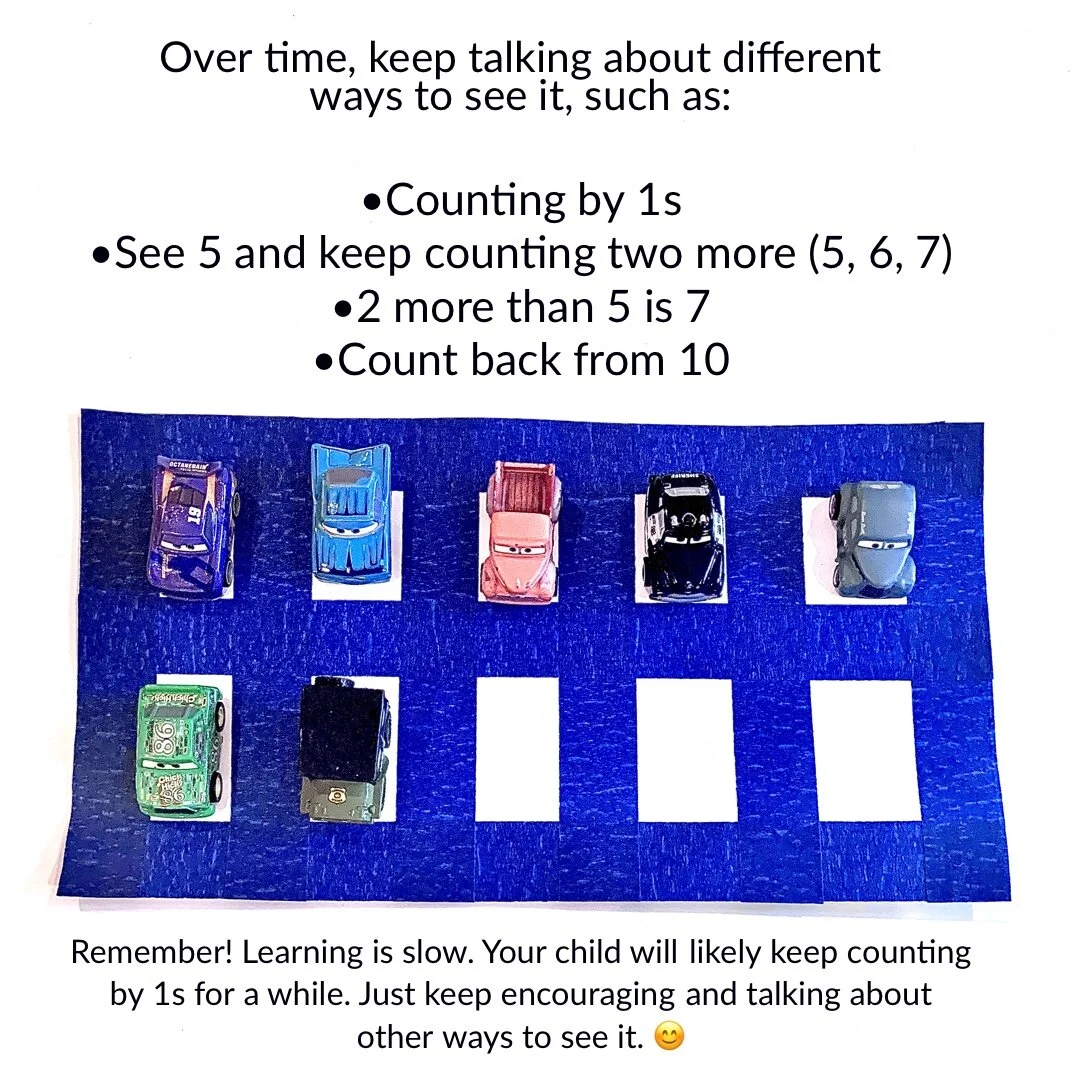My Favorite Early Math Tool to Incorporate into Play
Play is the first step towards ensuring a child has a strong early math foundation. As the author Amy Noelle Parks points out in her book, Exploring Mathematics Through Play in the Early Childhood Classroom, “Play offers opportunities to solve non-routine problems, to persevere, and to make connections among mathematical ideas.”
There are many objects that naturally inspire mathematical thinking, such as blocks, play dough, linking toys, puzzles, and containers.
In addition to these toys, there’s one additional tool I like to incorporate when my children are playing—a ten frame!
Ten frames are an amazing tool both for learning to count and for building number sense. Number sense is a person’s ability to think flexibly about the relationships between numbers. Think of it as the foundational understanding of how numbers work that children then apply to everything they do in math!
Ten frames support number sense by helping children think about numbers in relation to the benchmark numbers of 5 and 10. Ten is a big deal because our number sense is built on repeating groups of ten (we call it a base ten system). Because five is half of ten, it’s an easy benchmark within the groups of 10. When children learn to see the numbers 1 through 10 in terms of their relation to 5 and 10, they’re learning a pattern of relationships that will repeat within 11 to 20, 21 to 30, and so on....
And ten frames fit perfectly into pretend play—as a car parking lot, a picnic table for toy pets, or a baking tray with cookies. So grab some cardboard or a piece of construction paper, draw out a ten frame, and see how easy it is to incorporate number talks into play time!
The pictures below show examples of how to start incorporating ten frames into play.





